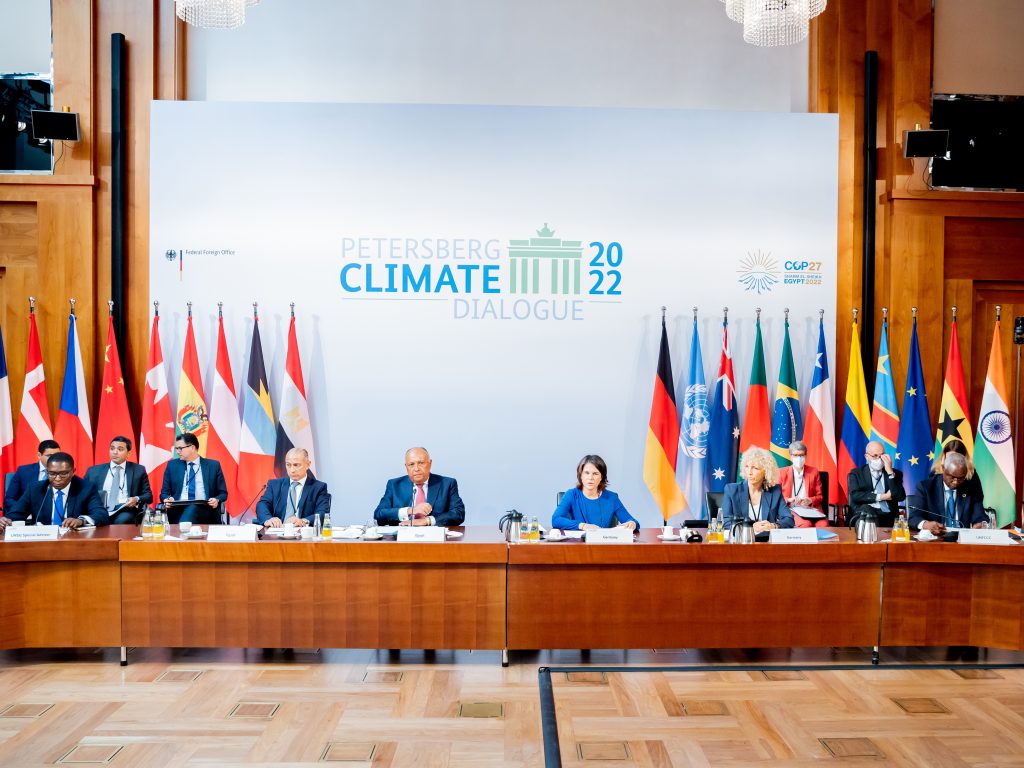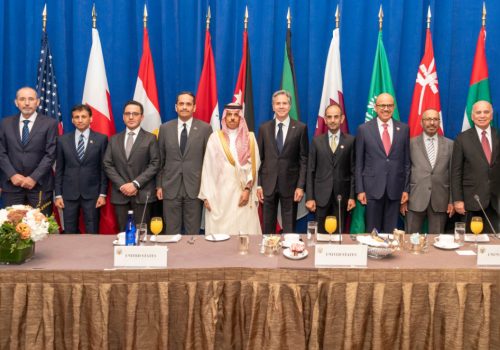In recent years, Egyptians seemed to have become resigned to their country’s social, economic, and political trajectory. Under President Abdel Fattah el-Sisi, the country has undergone massive aesthetic changes through an infrastructure overhaul and experienced bursts of economic revival amid a widespread malaise regarding social and political issues. For much of the past decade, Egyptians have been a society traumatized by the seismic political shifts between 2011-13, and were broadly accepting of the proposition made in 2013 through the military ouster of President Mohamed Morsi, consenting to the forfeiture of political rights and social development in the hope of peace and stability, in whatever form it came.
Reshaping national identity through infrastructure projects
Today, however, the calculation has changed. While Egyptians initially welcomed the new infrastructure that would ease daily commutes and travel within the country, the overhaul is decimating the country’s cultural heritage, most notably in its sprawling capital, Cairo. That decimation has led to the questioning of the regime’s response to almost any issue with bricks and mortar—or in Egypt’s case, with steel and concrete. Nondescript buildings in identical “new” cities connected via multilane highways have severely damaged Egypt’s cultural identity and traditional architecture. A new form of cultural identity is being manufactured, as the well-known chaos of Cairo collides with urban planning suggestive of a second-rate attempt to mimic modern cities in the Gulf states. Around the Great Pyramid of Giza—one of the Seven Wonders of the World—stretches of highways remove any sense of urban living among the pharaohs. Meanwhile, as many elites have spent much of the last ten years relocating to satellite cities that afford the luxury of green spaces and large villas, new highways further cut them off from Cairo’s middle class and poor, as they traverse highways around the city, without ever actually entering it, or watch from the new bridges that weave among the city’s high-rise buildings.
Down below, the things that have always made Cairo the “City Victorious” are slowly being erased. Colorful Nile houseboats have been the latest victims of development. Despite a weeks-long global campaign effort to save them, the houseboats were hauled off and destroyed earlier this summer, leaving their residents—some of whom had been born on the boats and lived on them for decades—to fend for themselves, with little recourse to compensation from the state. Proclaiming that the “Nile is for everyone,” the government now seeks to replace the boats with restaurants and cafés. That kind of eradication has already occurred across most of Cairo’s green spaces. Roundabouts and small parks have been replaced with parking spaces or kiosks for food and goods to accommodate drivers. The Nile redevelopment has resulted in thousands of residents being forcibly displaced to make way for high-rise apartment buildings that they cannot afford. Citizens evicted from Cairo’s slum areas have been rehoused in characterless state-subsidized housing on the outskirts of the city, removing them from their neighborhoods, taking away their livelihoods, and effectively erasing them from public spaces and sight.
Cairo is not the only city subject to this strange new reality. In Alexandria—Egypt’s second-largest city—the Corniche and surrounding areas have been destroyed to make way for larger, wider highways that connect the city, and bridges are being built on the beach itself. As in Cairo, the regime is redesigning the Corniche walkway—in Cairo along the Nile, in Alexandria along the Mediterranean coastline—and will charge citizens to access public spaces.
These are examples of the broader state agenda and the regime’s erasure of the past. For many, this agenda was evident early on with the 2020 redesign of Cairo’s iconic Tahrir Square and the banning of gatherings there, signs of the revisionist history that has sought to remove opportunity and hope from Egyptians by removing the symbol of its 2011 uprising. In the years since the Arab Spring, the redesign has been on a scale that arguably seeks to change citizens’ relationship with the state, and with their own identity.
The regime’s quest for more engaged political and socioeconomic constituencies
El-Sisi has regularly deployed negative and disparaging language to signify his frustration with the population. In various speeches since 2013, the president has described Egyptians as lazy, wasteful, entitled, selfish, and unappreciative. It is somewhat ironic, then, that after years of deriding the people, shoring up power within the institutions, and weakening the remaining ones that are there to represent the people, el-Sisi is now exhorting Egyptians to support his efforts to revive the economy, and—within regime limits —to engage more, politically and socially.
In 2019 Egypt was successfully riding an economic revival without precedent since 2010. As with many countries, in the Global North and South alike, the pandemic halted major development plans and growth, and the economic recovery has been further affected by Russia’s invasion of Ukraine. Put simply, the country is broke. After years of supporting an economic model that pitted the military apparatus against domestic and foreign business entities and investors, el-Sisi has found the model unsustainable. Now, imploring the business elite to work with him and promising to listen to their demands and advice, the president seeks new constituencies and support to soften the blow as the military may be forced to loosen at least part of its grip on Egypt’s economy.
That also entails weakening the almost decade-long crackdown and erasure of political rights in the country. With the renewal of talks with the International Monetary Fund over yet another bailout, and the knowledge that this one will damage his reputation due to its severe conditions, namely a significant currency devaluation being demanded by the IMF and other lending states (including Gulf partners), el-Sisi has begun a course of political engagement with opposition figures and known civic actors. This should by no means be seen as a form of course correction or the opening of politics in the country but rather as an attempt to weaken expected opposition in the coming months. With an eye on the 2024 presidential election, el-Sisi has decided that divestment of lucrative state and military investments requires broader buy-in, at least temporarily, by larger constituencies.
Opposition leaders are arguably right in choosing not to trust the president’s promises or his commitments, and instead demanding acts of good faith—most notably, the release of political prisoners—and debate on the most contentious issues: elections and political participation. While the regime may feel it beneficial to stoke disagreements within the Civil Democratic Movement, the opposition has remained firmly united and committed to achieving small but important goals. As such, el-Sisi is finding it difficult to engineer the process. Although the regime is committed to certain procedures—yet never eager to see them through—the media scrutiny at home and international focus abroad on the national dialogue has painted the establishment into a corner. It is struggling to find compromises it can absorb, ones that can both silence its detractors and repair the reputational damage.
Meanwhile, the country is battling a femicide epidemic that has brought violence against women to the forefront of social discussions. After a longstanding fight to prevent the question of women’s rights being elevated to a contentious social issue, amendments to the Personal Status Law now sit at Parliament’s door under the watchful eye of a mobilized women’s movement. These were presented by some of the most ardent state actors, who demanded the president approve changes that, once enacted, are believed could change the landscape for women in Egypt. All this happens as the country faces climate challenges, including shock weather events like floods and drought, that have not been a part of the political, social, or economic calculation until recently.
The challenges ahead
Despite the numerous challenges, el-Sisi and his regime have remained confident of Egypt’s social cohesion. The country has always been seen by its citizens and outside observers as too homogenous for major rupture, rifts, or worse, conflict. Despite the periodic rise of militant extremism, and even amid continued structural sectarianism and marginalization of a large Christian minority, Egypt has remained comparatively cohesive, with social fractures labeled “interruptions” rather than embedded unconscious biases. As the economic situation worsens, with few to no political rights, a stifled media, and persistent brutal crackdowns on youth and youth culture, however, there is significant evidence that no matter the current solutions the regime provides, the situation will become unsustainable.
Egypt’s challenges are many, some of them undeniably of its own making. The social fabric is now battling a number of crucial and emerging issues—climate change, the national redesign, Egyptian women’s fight for freedom and accountability—and those more traditional markers: the economy, civil society mobilisation, demands for political organizing, and demographics. The resolute and fearless leadership needed to address these challenges simultaneously is unlikely to be found in the current regime. There is neither the desire to empower Egyptian citizens nor the confidence in sustainable policies being able to secure and uphold the regime. While small changes here and there may give the impression of growth, and minor solutions to specific problems may indeed provide some respite, the larger, more existential challenges will remain, with continued diminishing confidence that the regime will seek to empower positive change and implement long-term sustainable growth for its population.
Hafsa Halawa is an independent consultant working on political, social and economic affairs, and development goals across the Middle East and North Africa (MENA), and Horn of Africa regions.
Read more
Image: Samih Schukri (in the M, l), Foreign Minister of Egypt, and Annalena Baerbock (Bündnis 90/Die Grünen, in the M, l), Foreign Minister, take part in the Petersberg Climate Dialogue at the Federal Foreign Office. High-ranking representatives from around 40 countries are meeting at the Federal Foreign Office in the run-up to the UN Climate Change Conference COP27 to discuss steps to tackle the climate crisis. Egypt is co-hosting the COP27.

